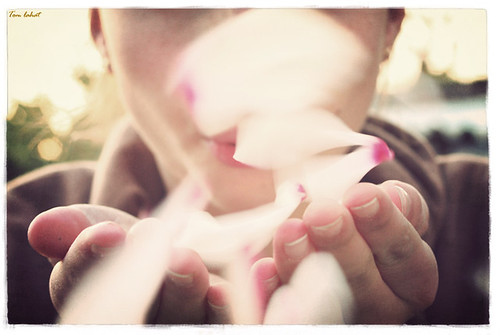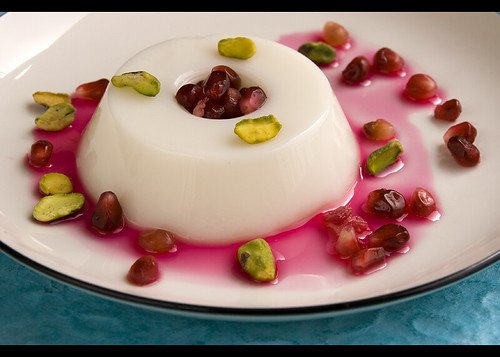With all the whirlwind of the winter holiday stress, followed by end-of-year lists - it's often difficult to make a distinction between the winter holiday season (which tends to inspire very wintery themed scents), when winter technically takes place (December 21st - March 20th).
Technically speaking, we are now in mid-winter. So I've decided to dedicate a post to mid-winter's favourite fragrances and little comforts. That bleh season that's between the winter holidays and the romantic explosion that is Valentine's day is mostly characterized by post-holidays cashflow crunch (for many people in the parts of the world afflicted by consumerism), mundane day-to-day chopping of firewood and working hard to bring food to the table and stay warm. If the fall is the season of sorting, harvesting and gathering (nicer word for hoarding) for the colder months; the dead of winter is the season for using up what we've collected, and for portioning it wisely so we don't starve before the earth re-awakens again in the spring...
How does this translate into perfume? Well, for starters - if you are in a cash crunch, there are many ways to indulge your perfume-cravings (or hobby), that would not cost an arm or a leg. Enjoying what we have is a not just a force of reality, but also a virtue. This is the time to bring out the big guns - all those furry
orientals, big white florals, animalic chypres that will be overbearing
most other times of the year. Youth Dew, Obsession, Poison, Opium, Tabu,
Aromatics Elixir - this is your time to shine! All of the wonderful treasures you are keeping for a special occasion - enjoy them now! They last for a long time, but they might turn one day. So wear them now, and enjoy them in good health. You deserve a special perfume even more so on a non-special day...
This is a great time to re-visit what you have in your collection that's been collecting dust or have been pushed into a dark forgotten corner of your sample drawer.
Keeping a perfume journal is another great idea. You don't need to have a blog to do it. And you don't need Moleskine to come up with a template either... I can provide one for you (in a separate post), and you can start a hand-written, illustrated or typed version of your own perfume journey, to record your impressions and re-invent your interest in perfumes. Sooner or later you'll discover that there is always another layer to what you have in your collection and think that you know inside-out and backwards...
And as to the list? It is the most obvious cliche, but as one of my friends like to say "it all happens for a reason". Thankfully, the reason here is that when its colder, stronger and heavier scents don't come across nearly as intimidating as in the heat of summer; and also, because the lighter, fresher scents tend to have a weaker (and often under-satisfying) presence.
When winter is at its peak, and the nights are still long and cold - there is nothing quite more special than going to bed wrapped with an extra layer of luxury - vintage perfume or one of the most cherished extraits. And other times, it's just wonderful to spritz a bit of sweet citrus deliciousness into the air and walking through it before going on a brisk walk in the fog or a boring treadmill session when the weather is not cooperating with my desire to job on the beach... While all of the selections below are glorious, there is something more mundane and approachable about them, not quite as festive as Nuit de Noel or Parfum Sacre; and not as romantic as what you'd be reaching for when February 14th rolls in (whether or not you have a date).
Miss Dior extrait was my first Chypre love. I first smelled it in a mini coffret I got a trans-atlantic flight. I was in mid-air yet smelling it made me feel very grounded. I was surprised how much I liked it - I was very young then and someone told me that Miss Dior was a more "mature" fragrance, while Diorissimo (my favourite then) was for youngner ladies. Even though it had a very natural warmth about it, all the ingredients were so magically blended that I could not pick out any one from the others. Only later I discovered what Chypre is - and this love affair never ceased. Miss Dior is one of the very few perfumes I stockpile* - from before the oakmoss free days. I have 3 bottles of extrait (one of them vintage) and 2 more of the eau de toilette. Does that make me a hoarder?
Aromatics Elixir a refreshing discovery for me this winter is that I can actually wear Aromatics Elixir without fainting. It comes in small and affordable 10ml spray size (don't you wish all perfumes were bottled that way?) and I've been wearing it daily, more or less, ever since (that's full 2 weeks, very impressive for me - I usually change my fragrances on a daily basis, or even more).
Aromatics Elixir Velvet Sheer is a toned-down yet very respectful version of the original. It's greener and muskier, and I love the dabbing application (and, shamefully admit to also liking the non-greasy emollient texture of the liquid it is suspended in, even though it's mostly made of silicones). I've been so smitten with both of the elixirs, that I also ordered online the limited edition from 2011 titled "Perfumer's Reserve".
Youth Dew extrait and bath oil are a sure way to reinforce that sedate state of mind. Languid, haunting, deep and overbearing if not carefully applied - Youth Dew is unique and although it seems very dated, there is no denying its almost-medicinal concoction of patchouli, cloves, narcissus and a myriad of other intense notes. Something you could only get away with in the wintertime.
Obsession Extrait has the smooth charm of amber and is almost overly sweet. If it wasn't for the hint of oakmoss, sandalwood and cyclamen at its base, it would have been really quite too much even for me. But when applied discreetly, it's so enjoyable and mysterious, with depth and lots of subtleties to discover beyond just sweet amber and tangerine. And - there is no mistaking why it has become the success that it was. It's distinct, and it works.
Champagne de Bois,
a modern interpretation of the woody-aldehydic-floral dream. Champagne
de Bois highlights woody notes of sandalwood, cedarwood and vetiver and
brings the smooth, precious-wood sweetness out of them with frankincense
and amber.
Shiso Aftelier brings to mind the camphoreous comfort and relief of Asian apothecary as well as the enigmatic allure of the Geisha world - whose use of incense materials usually used for religious rituals in their elaborate grooming rituals, applying charred aromatic woods to their perfectly coiffed hair, and smoulder their silk kimonos with incense smoke, and rub their body with spicy incense powder.
No. 19 Warm Carrot is another great-granddaughter of Bois des Îles and a unique reinterpretation of woodsy aldehydic floral, putting the underrated carrot seed at the spotlight. No. 19 brings out the woody and floral qualities of this modest yet precious ingredient (it is quite costly, and mostly been put into use in anti-aging creams and cosmetics) and brings out its creamy qualities while juxtaposed with ylang ylang, lavender, vetiver, labdanum, amber, benzoin and vanilla. It's also amazing as a body butter.
Prada Ambre Pour Homme Intense (or is the name the other way around?). While the name is long, the perfume is rather simple. Pathouli, benzoin, amber and an overdose of bergamot that makes it almost soapy. And plenty of musks, of course. I have to admit that I like the dry down much, much better than the opening. It's not as popular in my rotation as Patchouli Magique, but it makes an interesting variation on the patchouli theme without being too redundant.
Velvet Gardenia. Gardenia typically has very tropical associations. But this floriental is anchored in a deep labdanum base and beeswax, bringing to mind candle-lit interior of a stone castle.
Eau de Mandarine Ambrée. I admit I'm not crazy for the new Hermese eau de colognes as much as I love their original Eau d'Orange Verte. But Eau Mandarine Ambree has a nice balance between cozy ambery sweetness and mandarine's juicy and zesty charm.
Ormonde for Her by Ormonde Jayne blends a few unlikely worlds - the prude, the witch and the modern seductress. Violet's demure quality bring to mind the first. The foresty, woodsy notes of black hemlock spruce and cardamom honour the witch in the forest over her medicinal brew. But it is the modern synthetic musks that quickly take over and make it so appealing to the modern woman, who wants to connect to her inner animal but can only do this by scrubbing off her natural smells.
What are your winter favourites?
* The others being Mitsouko, Vol de Nuit, Parfum Sacre, Le Parfum de Therese and Opium Fleur de Shanghai.
Labels: Lists, Winter, Winter 2014, Winter List






















